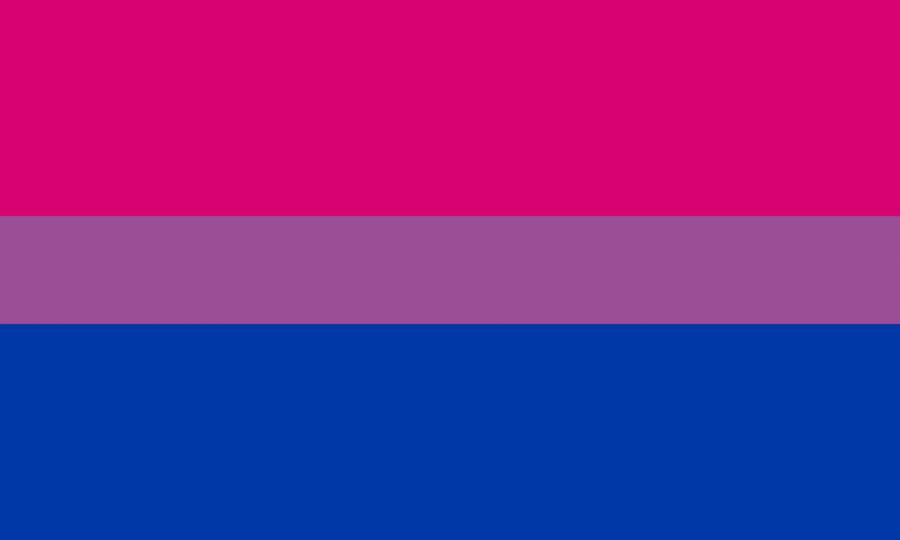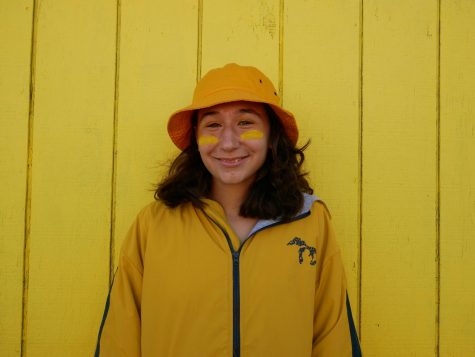What It’s Like to be Me: Being Bisexual
Bisexual Flag
January 11, 2019
The rainbow flag stands strong, a billowing banner, representing decades of change and tolerance. Bisexuality has a flag as well; a vibrant pink, blue and lavender that flutters in the wind.
“I came out as bi to my friends around 7th grade and came out to my parents about a year later,” remarked junior Sophie Kim.
Bi or bisexuality refers to “a person who experiences emotional, romantic and/or sexual attractions to, or engages in romantic or sexual relationships with, more than one sex or gender” according to the American Psychological Association (APA).
Bisexuals comprise the largest group in the LGBT community with “5.5 percent of women and 2 percent of men” identifying themselves as “bi.” Though the largest group, bisexuals face estrangement in many different places, even within the LGBT community. Many people equate bisexuality with an aversion to monogamy, and consequently are afraid to enter relationships with them. These stereotypes can often lead to biphobia—the fear of bisexuals— and bi invisibility (failing to recognize that one or both partners in what appears to be a straight or a gay relationship may be bisexual). Bisexuals bridge the increasing gap between straight and gay individuals, but are often not accepted by either community.
According to the San Francisco Human Rights Commission, many people commonly believe that bisexuality is “just a phase” of experimentation that a person might go through before eventually labeling him or herself as either gay/lesbian or heterosexual. Bisexuality is often not seen as a “real” sexuality, and is shoved underneath the carpet. Kim herself has encountered a few of the commonly held stereotypes about bisexuals. “I have been told before some people think girls are just faking it to get attention or that we’re being selfish, which is absolutely not true,” she stated.
As a student of the STEM program here at Roosevelt, Kim has a rigorous lifestyle.
“I’ll head to school and drag through the day, get to talk to friends freak out about upcoming assignments you know the drill,” she said. She is also a talented musician that devotes much of her time to harp performance. “I’ll do some work then go to orchestra, harp ensemble, my chamber group, or any other gigs I might have,” she said. “Sometimes I’ll spend my whole days on Thursdays at the Kennedy Center for a music fellowship I’m a part of.”
When coming out four years earlier, she had her friends’ support. “My friends, they’ve treated me the same since I’ve come out to them. My friends were the ones who encouraged me and made me feel really comfortable about myself,” she said.
Kim surrounds herself at school with a diverse friend group. They help to create the safe and accepting atmosphere she finds here at ERHS.
“I think that Roosevelt is really accepting of the LGBTQ community. There are a surprising amount of queer people at this school and most people in this school are very accepting. I feel safe and like I’m among really great, supportive people here.”
She was also successful in coming out to her family.
“My parents haven’t treated me too much differently, but they have shown some apprehension whenever I talk about dating or liking girls. They often question if I actually like girls and tell me it might just be strong admiration,” said Kim. She does have her parents’ support to go to LGBT events, which she often attends. “I went to my first pride festival in DC last summer with some friends,” Kim remarked.
According to a report published by the Movement Advancement Project titled “Understanding Issues Facing Bisexual Americans,” LGBT Americans already face higher rates of poverty, unemployment, and negative health outcomes than straight Americans, but among LGB people, bisexuals face higher rates of these negative outcomes than lesbians and gay men. This is potentially because of the commonplace discrimination and stereotypes that arise from outside and within the LGBT community.
Strides are being made, however. Kyrsten Sinema’s election to the Senate on Jan. 3 marks the first openly bisexual member to be elected to Congress. With representation in Congress, bisexuals now have a familiar face to fight for their views and their legislation. Whereas bisexuality in the media has often been virtually invisible, the number continues to grow. Public entertainment such as movies, TV shows and books help individuals to learn about bisexuality as well. This gradual increase in visibility helps more individuals to accept bisexuality as a legitimate sexuality, no longer just experimentation. Visibility helps to counter common misconceptions, stereotypes, and biphobia.
With Kim’s support from her family and friends, she said she felt confident enough to come out. However, according to the Pew Research Center, only 28% of bisexuals feel comfortable enough to come out to their friends and family. Most bisexuals fear what being open about their sexuality could mean.
“Most people around me are really supportive of bi women and that’s honestly pretty wonderful,” says Kim however. Perhaps in this new generation and with more awareness, others will feel the same and be surrounded by accepting individuals.




